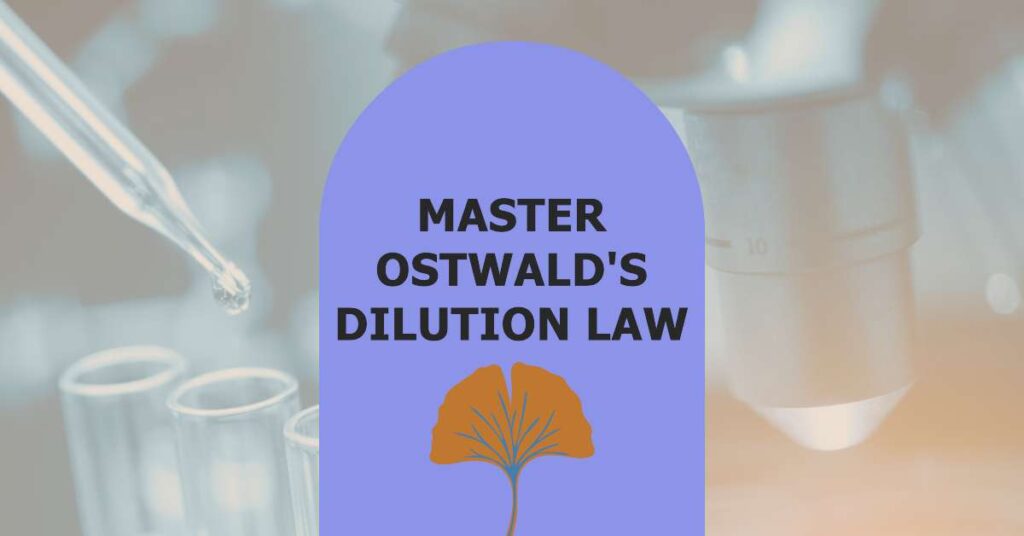
The Ostwald Dilution Law, a physical chemistry fundamental, explains the relationship between a solution’s dilution and its degree of dissociation. It is proposed by Wilhelm Ostwald that as a solution dilutes, the extent of solute dissociation increases correspondingly, influencing conductivity and chemical equilibrium in electrolytic solutions.
The Ostwald Dilution Law is a fundamental chemistry theory that helps us understand how weak electrolytes behave when dissolved in water. This law, named after the German chemist Wilhelm Ostwald, governs the relationship between the degree of dissociation of a weak electrolyte and its concentration in an equilibrium solution.
Weak Electrolytes Concept:
When weak electrolytes are dissolved in a solvent such as water, they partially dissociate into ions. In contrast to strong electrolytes, which completely dissociate, weak electrolytes, such as acetic acid or ammonia, only partially breakdown into ions.
Dissociation Level:
The Ostwald Dilution Law states that as a solution’s dilution grows, so does the degree of dissociation of the weak electrolyte. This means that adding more solvent (such as water) to a solution containing a weak electrolyte increases the proportion of molecules that breakdown into ions.
Representation in Mathematics:
Ostwald developed an equation to represent the link between dissociation and dilution. According to the equation, the degree of dissociation is directly proportional to the square root of the solution’s dilution.
Importance in Chemistry:
Understanding the Ostwald Dilution Law is important in many different chemical processes, including industrial applications and laboratory studies. It aids in the prediction and control of weak electrolytes in solutions, which aids in the design and optimization of chemical reactions and processes.
In summary, Ostwald’s Dilution Law explains how the degree of dissociation of weak electrolytes changes with solution dilution. It establishes a mathematical framework for comprehending and predicting the behavior of these compounds, so improving our understanding of their involvement in chemical processes and applications.